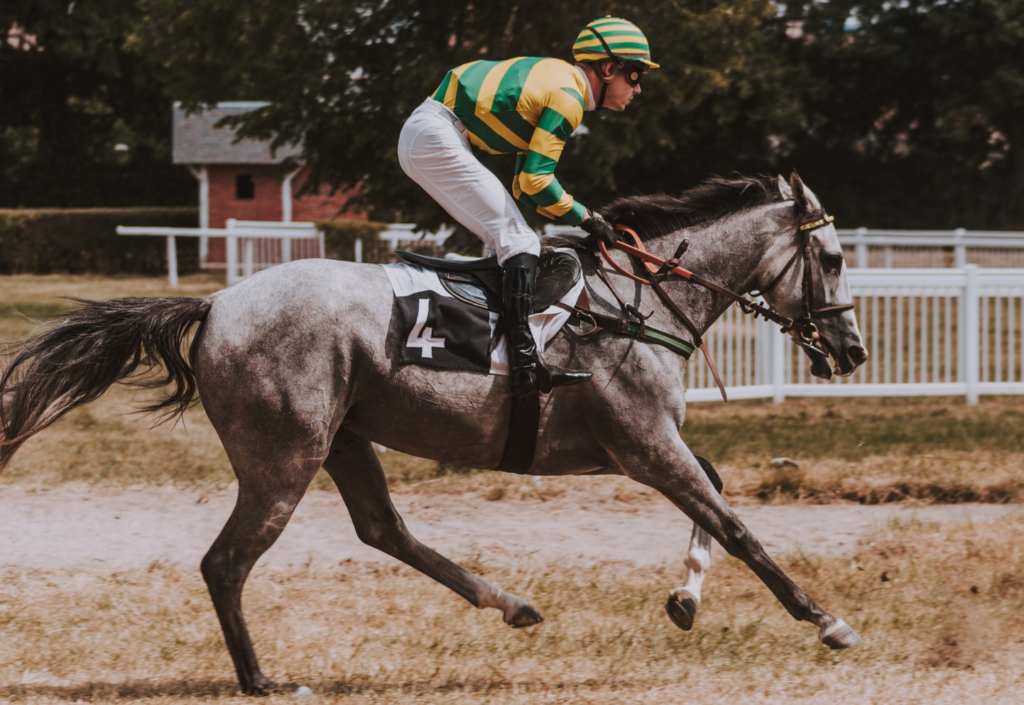
Horse racing, and horse race betting, can be traced back to ancient times with records of both chariot racing and mounted horse racing events in Greece, Rome, and Egypt. Later, the sport would gain popularity with the royalty of British society and become known as the “Sport of Kings.”
Thoroughbred racehorse breeding dates back to the 17th century, with all thoroughbred racehorses traced back to three foundation sires. To this day, all racehorses are called English Thoroughbreds. James Weatherby recorded every detail of a horse’s breed in the General Stud Book.
British Horse Racing in the 17th Century
The earliest known Rules of Racing dates back to 1619. The weights of jockeys began to be measured and enforced. Race meetings started to appear around the country as races ran for the coveted prize, a silver bell.
When Charles I took the throne in 1625, horse racing in Britain was gaining popularity, and the first Gold Cup event was held in Newmarket in 1634. However, in 1654 Oliver Cromwell banned horse racing despite keeping his own racehorse. Horse racing once again flourished with the Newmarket Town Plate in 1664 under Charles II.
British Horse Racing in the 18th Century
The Royal Ascot was founded in the early 18th century and is still called the Queen Anne Stakes. Queen Anne herself kept a stable of racehorses and helped the sport gain popularity. The first published account of race results with all plates and prizes dates back to 1727.
The British Parliament attempted to restrain the growth of horse racing in 1740 without much success. In 1750, the Jockey Club was established to create and apply the Rules of Racing. At this time, match races were run for mature horses, typically best-of-three heats over long distances. Three-year-old thoroughbred races were first recorded in 1731 and two-year-olds not until 1769 with the introduction of shorter races.
British Horse Racing in Modern Day
Today, the Sport of Kings is as popular as ever. Over the last century, technology has greatly improved the sport, from photo finishes introduced in 1947 and starting stalls in 1965. From newspapers to television and now online, British horse racing has become a sport accessible to the masses, not just the aristocrat.
The Jockey Club continued to regulate the sport until the British Horseracing Board was formed in 1993 to oversee race planning, finances, training, marketing, and other responsibilities. Eventually, the Jockey Club focused on the operation of 13 racecourses, and regulation was handed to the newly formed British Horseracing Authority in 2007.
Early British Racecourses
There are currently 60 licensed racecourses in Great Britain, with all but two of them dating back to 1927 or earlier. The majority of British horse racing takes place on turf. Six courses in Britain have been converted to all-weather tracks, typically a Tapeta surface which is a mixture of the finest silica sand, wax, and fibers that mimic the root structure of turf.
Unlike most courses in the United States, British racecourses are not regular ovals.
Tracks can be U-shaped, pear-shaped, or triangular. At some racecourses, horses may have to run uphill, downhill, clockwise, and counterclockwise. Some races take place on a straight-away where horses do not have to turn at all.
Chester
Established in 1539, Chester is the oldest racecourse still in operation. The Mayor of Chester, Henry Gee, was the first to award a silver bell at a horse race at the annual Chester Fair. In the early 19th century, horse races at Chester were so popular that they built the first grandstand for the eager crowds. The shape of the track enabled racegoers to view the entire race, not always possible at other racecourses.
Newmarket
The first Newmarket race took place in 1622 with the first Gold Cup event held in 1634. The Jockey club, formed in 1750, leased a plot of land in Newmarket. They set up rules meant to keep races fair on Newmarket heath. Eventually, these rules and regulations were adopted by racecourses around the country. As time passed, the Jockey Club’s Rules of Racing eventually became the official governing body for horse racing in Britain and internationally.
History of Horse Race Betting
Horse race betting is as old as horse racing itself. The betting industry is vital to the funding of the sport. Gamblers stake money on the placement of a horse in a race, and the pool is shared among the winners.
The Jockey Club codified the Rules of Racing that helped make structured gambling possible. The use of thoroughbred horses with defined weights was integral to the growth of betting on horses. As the sport gained popularity in the 1800s, private bookmakers would operate at the various courses taking bets.
In 1928, the UK government created the racecourse betting act to ensure fair practice, while allowing the government to garnish taxes off of the betting action.
With today’s technology, it is now possible to place an online bet on any horse race at any racecourse anywhere in the world.